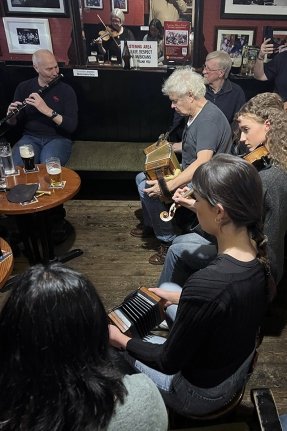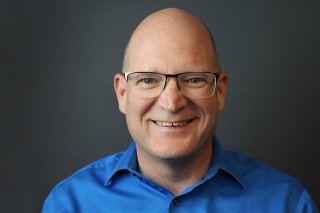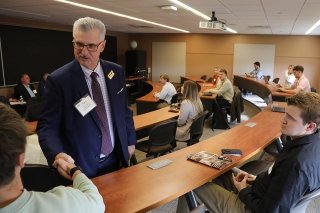Music Without Borders
Bloomsburg
Posted

For Gifford Howarth, music has no borders.
Howarth, associate professor of percussion at Commonwealth University-Bloomsburg, has been a Yamaha Performing Artist since 1996 and focuses on mallet and marching percussion. Howarth’s passport has more stamps than Mozart has symphonies. He’s travelled the globe as both performer (marimba) and jurist in percussion and marching band competitions.
Last year, his travels had an additional purpose: to create recordings of performances to bring music from around the globe to Commonwealth students taking “World Music” classes. Howarth is developing a new online, all-inclusive world music course that can be accessed by any student at any institution. This fall, he’ll be teaching the course in person on the Bloomsburg campus and simultaneously beta-testing the online course materials, which have already garnered interest from textbook publishers.

“Popular music is embedded in our everyday lives,” says Howarth. “Music is also embedded in our culture. When I’m in Indonesia at a drum festival, I stand out. I’m tall and pale. But because of the music, I belong.”
His travels while on sabbatical last year took Howarth to Japan, Malaysia, Indonesia, Singapore, and Ireland.
In Ireland, Howarth veered from the tourist destinations around Dublin and visited the pubs of the locals, interviewing and recording a dozen professional musicians who play tin whistle, flute, and the bodhrán (traditional Irish drum). In Malaysia, he visited an Indian classical music school and a traditional Chinese orchestra. Back in the United States, he gathered more videos and interviews at the University of Massachusetts Dartmouth’s ethnomusicology department, focusing on West African and Middle Eastern drumming, and traveled to Miami to record Cuban and Afro-Cuban music.

His most elaborate trip was to Japan, where he visited the Osaka School of Music to record ensembles featuring traditional instruments such as the koto and shamisen. He also spent time with and recorded a Taiko Drum Ensemble. The 8-member group lives together at the base in Nara, giving 150 theatrical performances a year on drums that tower over the players.
“My goal for the course is to expose our students to the culture of music,” says Howarth. “Some students take it on themselves to jump down the YouTube rabbit hole and go deep into a particular thing, like Middle Eastern or Cuban drumming.”



